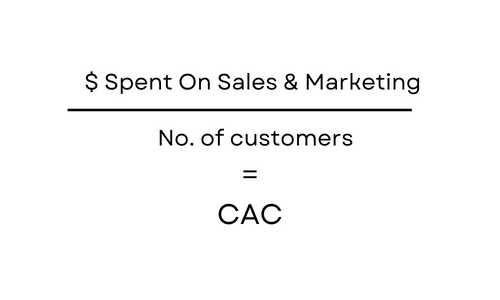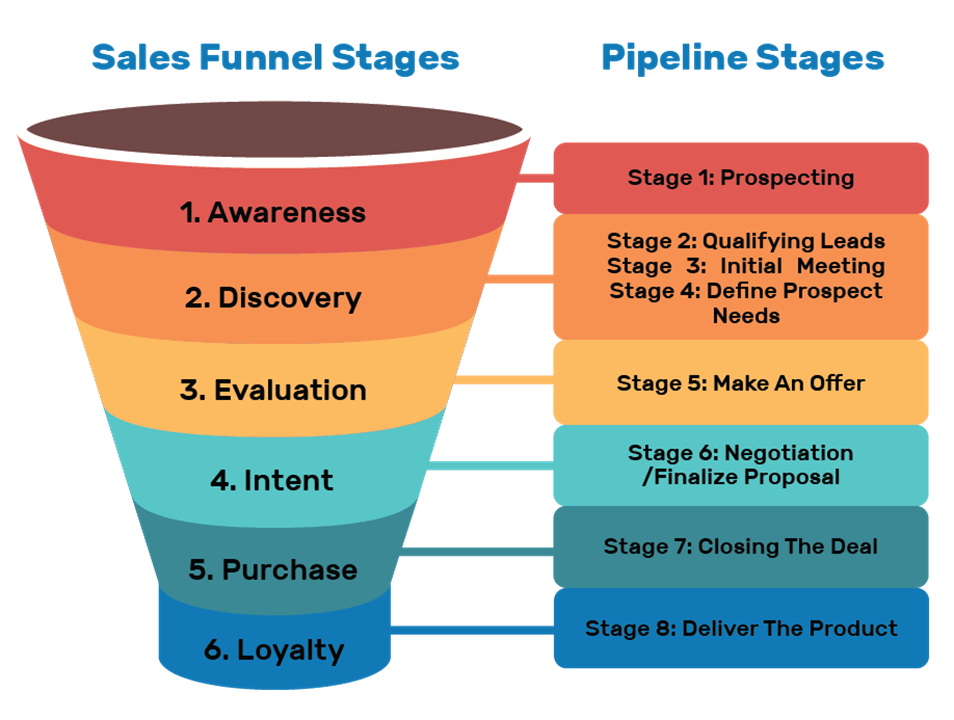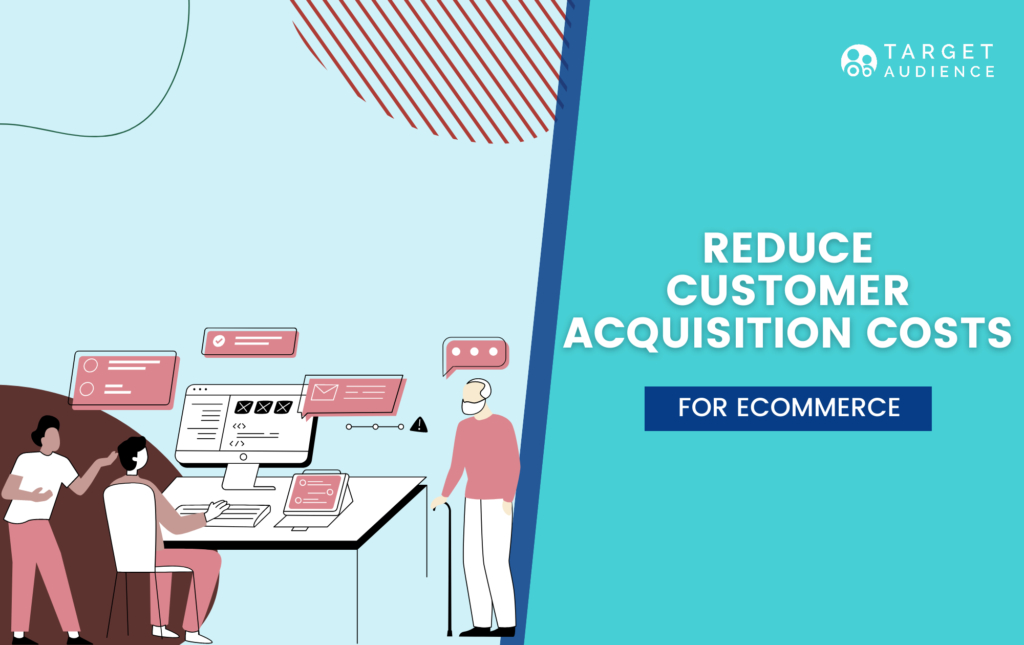What does the growth of an eCommerce business look like? More sales? On a very simplistic level, yes. However, increasing sales at all costs might not lead to a great outcome. Yes, you want as many new customers as possible but at what cost? Spending too little on customer acquisition can make you miss out on sales, but spending too much will deem you unprofitable. The goal should be to grow your business as efficiently as possible.
This is especially true for small and medium businesses that don’t have another option but to be thrifty and smart with their marketing spend. This is exactly what we’re here for. In this article, we explain what are customer acquisition costs exactly, and how you can get them to an optimal level.
What is Customer Acquisition Cost
Customer acquisition cost (CAC) is the cost your business spends to acquire a single new customer. Understanding your CAC is important because it gives you an idea of how much you need to earn from each customer in order to have a profitable business. If you spend more on bringing in a new customer than the customer spends on your business – you will find yourself at a loss.
What does CAC include?
Employee salaries
The wages paid to your sales and marketing teams are an important part of your CAC. Depending on the size of your business, this can also include the customer support staff and IT. Generally speaking, for eCommerce, it’s best to reduce customer friction by eliminating as many human touchpoints as possible. Not only is this more economical, but it will also allow acquiring new customers 24/7.
The Technology Needed to Run Your Online Shop
Even the smallest of businesses, where employee salaries are not a significant factor, need a platform to run on. The subscription fee you pay for eCommerce platforms like Shopify, BigCommerce, or Squarespace contributes to your CAC. This also includes any other paid software you use to run your business, like CRM and analytics tools.
Ad Spend
Whether you use Google Ads, Facebook Ads, or another option, you’ll spend a significant amount per customer on clicks, signups, or any other type of leads generated through ads. That being said, a marketing campaign that is run properly can increase website traffic, visibility and sales, so the benefits are worth – and outweigh – the costs.
Content production costs
Content marketing can unlock the organic reach potential of your website and social media, but it has its own costs too. For example, you want to film a video tour of your product. Now you need to pay a third party to produce it or supply your own film equipment and crew. This applies to any type of content creation, from blogs to podcasts to social media posts.
Inventory maintenance
Depending on the type of products you sell, there are also inventory upkeep costs. Some products have a limited shelf-life and require specific storage conditions. Making sure every product is available for new customers whenever they want to make a purchase is part of a business’s acquisition costs.
How to Calculate Customer Acquisition Costs
In its simplest form the CAC formula looks like this:

The “dollars spent on sales & marketing” rubric needs to include all the factors we mentioned above. To optimize customer acquisition costs on a granular level, many businesses break down CAC by the campaign.
Strategies to Reduce Customer Acquisition Costs
1. Adopt the Pareto Principle
The Pareto principle, also known as the 80-20 rule, states that 80% of consequences come from 20% of the causes. In this case, it means that in every effort you make, you should focus on the top 20% that gets 80% of your sales.
Putting that into practice means doubling down on the following:
- Top locations: By identifying where your most dedicated shoppers are located, you can target your ads, pitch, and products, making it easier to convert. It also helps to understand in which location you can invest fewer resources.
- Top products: Sometimes having fewer products can be the smarter way to go. It results in lower inventory costs. Phasing out or discontinuing products can be challenging; one of the most effective ways to do it is to announce a clearance sale. Make sure you subtly state that these products won’t be available after this.
- Top traffic sources: Once you know which channel brings the best results, you can double down on your efforts there and cut out the ones that don’t perform well.
2. Use retargeting wisely
Many people will browse your website and leave without making a purchase. These customers are already aware of your brand and have shown interest – now they just need a little nudge to convert. Retargeting can generate a trademark search lift of up to 1,046% within four weeks of exposure. Retargeting, among other strategies, can effectively improve customer conversion rates.
The mistake most advertisers make is to update their retargeting campaign only once when – setting it up. To get the best results, you should regularly and continually optimize it and remove customers who have already converted. Since they’ve already completed their purchase and are unlikely to take action, retargeting them will only increase your CAC.
3. Identify and optimize gaps in your funnel
Most eCommerce websites experience a lot of leaks from the funnel – forcing them to spend heavily on email marketing, retargeting, and other avenues to bring bounced visitors back. In order to reduce customer acquisition costs, you need to run a thorough analysis of your conversion funnel and realize at which stage most people drop off.
A conversion funnel is basically a representation of the customer’s journey on your website. Here are a few essential steps to optimizing your funnel:
- Start by looking at the ‘behavior flow’ report on Google Analytics. This tool shows you the number of drops your website has on every page.
- After identifying the page with the most drops, you can use a heatmap tool like HotJar. Take a look at the clicks and navigation data to see how users generally behave on those pages. Based on this data, find the friction points and fix them accordingly.
- Analyze whether the popups and exit intents actually convert visitors or get closed. Test the copy, display trigger time, and the CTA to figure out the best approach.
- Update your internal search to display alternatives when there are zero results for a search query.
This process is more complex than it sounds on paper, and it can take some trial and error to build an efficient and holistic conversion funnel.

4. Focus More on Customer Lifetime Value and Retention
Improving the CLV of your existing customers holds a ton of value – better referral, easy branding through word-to-mouth, and more sign-ups to loyalty programs. Studies say you can increase your profits by at least 25% with just a 5% increase in customer lifetime value. However, many eCommerce businesses put a lot of effort into acquiring new customers and don’t invest enough in retention. In the long run, this will significantly bump up your customer acquisition costs.
Three retention strategies that have an impact on your CAC:
- Email marketing: Keep communicating with your existing customers after they have completed a purchase. Of course, we don’t mean to fill up their inbox just for the sake of it. Make sure that each message you send has value.
A week after the customer’s first purchase, send them a follow-up email saying thank you and recommending products related to the initial purchase. After the initial follow-up, make sure to send personalized messages regularly, to notify shoppers about promotions, new products, or upcoming sales. - SMS Marketing: Text messages are great for time-sensitive offers and creating a sense of urgency. Think limited-time coupons, discount codes, or links to exclusive offers.
- Loyalty programs: Loyalty programs are an effective retention strategy because they motivate customers to purchase more often to earn rewards.
3. Be unique with your content marketing
Content marketing has become the most popular way to drive sustainable organic growth, and for a good reason. When done right, it works. The average conversion rate for stores that run content marketing is nearly 3% which is 6 times higher than those that don’t.
The catch is that it’s a crowded field. You have to be unique to stand out. Email marketing and blogging are important, but at this point in time, it is vital to invest in short-form video. Reels, TikTok, YouTube Shorts – all these fast-growing platforms allow you to showcase your products in original ways.
The idea is to inspire users on how they can benefit from your product. If you have a fashion brand you can make “how to style” videos. if you sell furniture you can show people how they can design their work-from-home-corner, if you sell coffee you can share cool coffee recipes. You get the point, it’s all about smart product placement.
Another idea is to share videos of your customer unboxing something they ordered, or any other user-generated content that provides social proof (more on that later).

6. A/B test
As we already mentioned, a frictionless optimized customer journey is essential to gaining more conversions. And increased conversions mean lower CAC. There’s no better way to improve your conversion funnel and digital marketing efforts than a simple A/B test. It’s especially important to test the first touchpoints that are supposed to spark a visitor’s interest.
Landing pages, web copy, Google ads, CTAs, color schemes, and just about anything your team comes up with can and should be tested. The more you test, you start identifying what works and what doesn’t and what’s worth investing your dollar and effort in.
Another link between your CAC and split testing is the time and effort of your marketing, design, and development teams. When you realize what works, you know how to better use your team’s time. As you keep perfecting each element, the changes become minimal and the cost of design and development is reduced.
7. Constantly optimize your paid ads
Paid ad campaigns can account for a big chunk of your overall expenses and contribute to a high customer acquisition cost. High competition and changing privacy protection policies have caused costs to shoot up and made personalization and retargeting more complicated.
But there are ways to combat these challenges. Identify your top-performing ads, and the gap in your other ads, then optimize the channel for maximum ROAS. This may sound simple, but it’s actually a process that takes a lot of time, effort, and data analysis. That being said, consistently optimizing your paid search and paid ad campaigns is crucial for them to be effective and justify the money you invest.
8. Use User-Generated Content In Your Facebook Ads
Did you know UGC is the strongest factor contributing to a purchase? Facebook ads that used UGC have a 300% higher click-through rate and 50% lower cost per click. Similar results have been recorded for other platforms as well!
User-generated content includes customer reviews, comments on your social posts and ads, and videos featuring your product. Make use of this material by including it in your ads and landing pages. Social proof needs to be a core part of your content strategy.
9. Utilize Automation
To make the most out of your marketing spend, you need to be able to keep your customer data organized, and your messaging consistent and personal. Automation goes a long way in achieving that. There are many SaaS tools available to eCommerce businesses today.
By using automation you can drip out relevant, high-quality content to subscribers based on actions they take on your website, automate email task-flows based on data, and more. Moreover, automation reduces costs because fewer staff members need to focus on menial tasks.
A few ways you can utilize automation:
- Email automation: You can make sure an email is sent whenever a customer makes a purchase, abandons their cart, or signs up to your website.
- Develop user personas and determine which leads should be prioritized.
- Automatically publish content on your website, including blog posts and automatically apply discounts, and move products to the sale category.
10. Think in terms of brand, not just sales
What sets your business apart from others? What makes it a brand rather than just another online shop? The official definition of a brand, or branding, is managing the effect that the product or service is having on the customer.
Building a comprehensive brand identity is just as important as sales. The first step is to determine what your purpose and positioning are. The brand’s purpose is the big reason for its existence. Brand positioning is naming who your product is for and why your product is a better option than the competitors. Defining these will inform the strategy of everything else – color palette, logo, design, and most importantly brand personality.
Customers like engaging with brands they can feel some sort of an emotional connection to. So put that into consideration when building your marketing strategy and tune your campaigns to be relatable, and evoke emotions in your target audience.
Final Thoughts
Acquiring customers is a necessary expense for any business, however, doing so at all costs isn’t a sustainable path to growth. Keeping your customer acquisition costs balanced means keeping your business profitable, especially for small to medium businesses.
Customer acquisition is an area where nearly every company can look to reduce costs and improve results. The tips listed in this article can help you pave the way to improved revenue.



